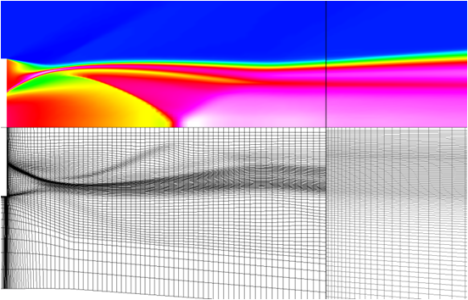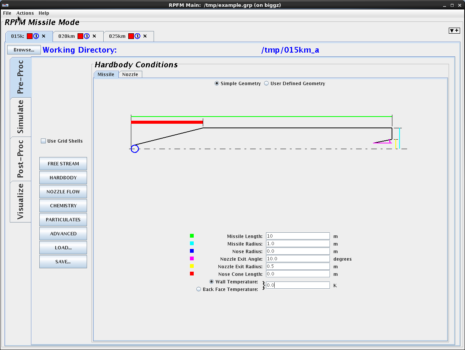RPFM Overview
The Rocket Plume Flowfield Module (RPFM), software package applies the highest fidelity computational methods and multi-physics modeling to plume flow phenomenology. Accurate predictions of missile plumes flowfields using RPFM can provide anyone with the capability to better understand and develop systems for missile launch detection, typing, tracking, and test planning. In addition, flowfields generated by RPFM can be handed off to signature tools to produce infrared (IR) and radar profiles or generate IR scenes for aim-point selection algorithms critical in hardware-in-the-loop testing.

Automation
RPFM utilizes the structured CRAFT CFD flow solver developed over countless man-hours of plume flow modeling research. An Intelligent Automated Architecture (IAA) is coupled with an intuitive user interface, resulting in the end user needing little to no computational fluid dynamics (CFD) knowledge to obtain high-fidelity CFD flow solutions for realistic missile trajectories. Simulations can be performed from sea-level to 300 km in altitude with continuum enhancement models applied over 100 km. The continuum near-field solution can also be interfaced to non-continuum flow solvers, such as the Direct Simulation Monte Carlo based CRUSE DSMC sovler, using the Automatic Efficient Generalized Interfaces Surface (AEGIS) Toolkit.

Keys to Efficient Predictability
3rd Party Tool Coupling
Solution post-processing tools are provided to easily convert into formats necessary for coupling with partner software toolkits, including:
